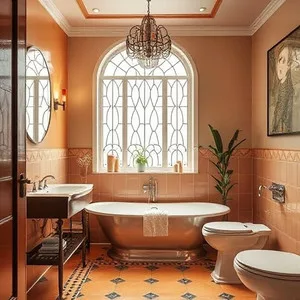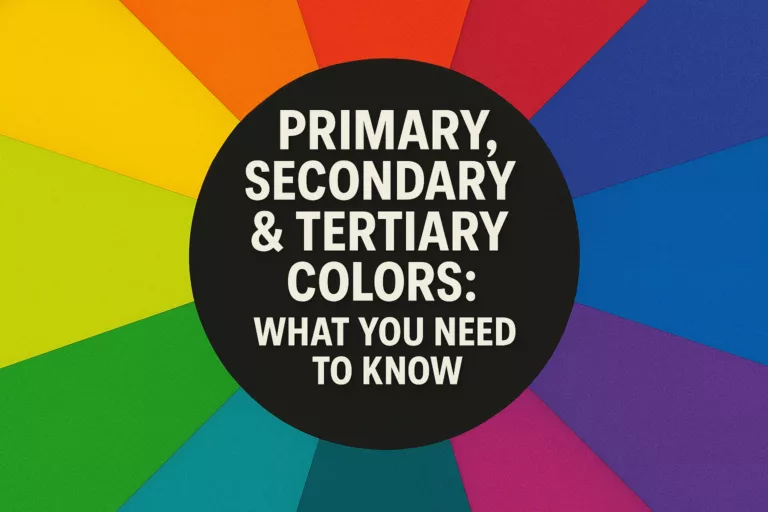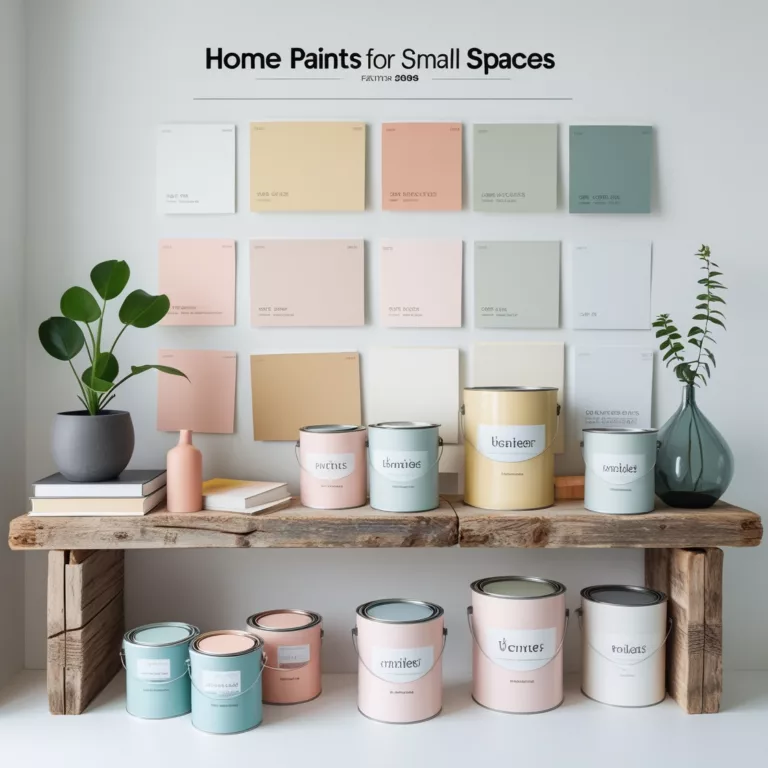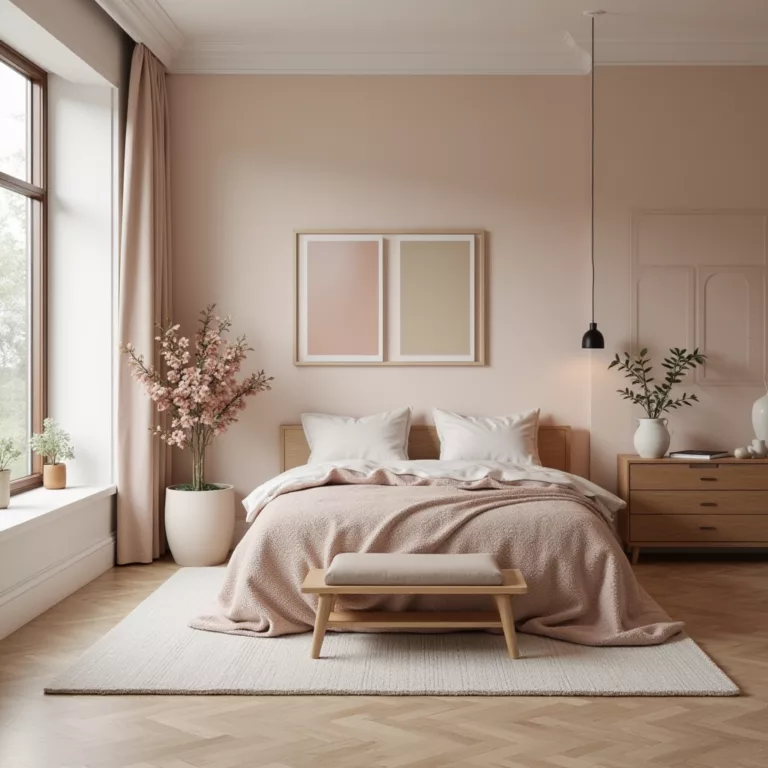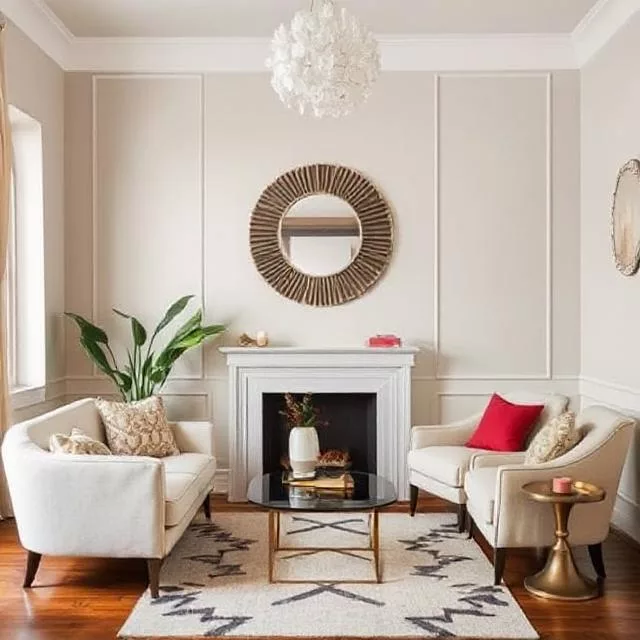Bathroom Colors That Create a Spa-Like Atmosphere:
Bathroom Colors for Spa-Like Tranquility
The concept of bathroom colors that create a spa-like atmosphere has transformed from a luxury trend to an essential element of modern home design. Your bathroom serves as more than just a functional space it has the potential to become a personal sanctuary where stress melts away and tranquility reigns. At the heart of this transformation is the strategic use of color, which has the profound ability to alter both the physical appearance of your space and your psychological response to it.
Bathroom colors that create a spa-like atmosphere work on multiple levels, engaging with our subconscious to evoke the same sense of calm and rejuvenation we experience in professional spa environments. The right color palette doesn’t merely look appealing it actively reduces stress hormones, lowers blood pressure, and creates the mental space necessary for genuine relaxation. Whether you’re planning a complete bathroom renovation or simply refreshing your space with new paint, understanding the psychology and application of bathroom colors that create a spa-like atmosphere can transform your daily routine from mundane to restorative.
In this comprehensive guide, we’ll explore the science behind color psychology in bathroom spaces, analyze the most effective bathroom colors that create a spa-like atmosphere, and provide practical implementation strategies for bringing these tranquil hues into your home. From soothing blues that evoke water’s serenity to grounding earth tones that connect us with nature, we’ll cover the entire spectrum of possibilities to help you create a bathroom that doesn’t just serve its functional purpose but actively supports your wellbeing through the subtle but powerful influence of color.
The Science of Color Psychology in Bathroom Spaces
Before diving into specific bathroom colors that create a spa-like atmosphere, it’s essential to understand the psychological and physiological foundations of how color affects our state of relaxation and wellbeing. This connection isn’t merely subjective or aesthetic it’s rooted in our neurological responses and evolutionary biology.
How Colors Affect Relaxation and Stress Levels
Our relationship with bathroom environments begins with visual perception, which triggers a cascade of physiological responses that either enhance or impede relaxation:
- Cool Colors (Blues, Greens, Soft Purples): These hues within the bathroom colors that create a spa-like atmosphere spectrum tend to lower heart rate and blood pressure, activate the parasympathetic nervous system (responsible for “rest and digest” functions), and reduce the production of stress hormones like cortisol.
- Warm Colors (Soft Beiges, Gentle Terracottas, Muted Pinks): When used in appropriate tones and intensities, these colors can create feelings of gentle warmth and comfort without the stimulating effects that brighter warm colors might produce.
- Neutral Colors (Whites, Grays, Taupes): These create a foundation of simplicity and spaciousness that allows the mind to decompress, reducing the cognitive load that more complex color schemes might impose.
Research from environmental psychology studies at the University of California has demonstrated that exposure to the right bathroom colors that create a spa-like atmosphere can reduce stress markers in saliva by up to 60% compared to environments with stimulating or chaotic color schemes. Their studies show that even brief exposure (15-20 minutes) to optimally colored relaxation spaces can significantly improve mood and reduce anxiety.
The Biophilic Connection: Nature-Inspired Colors
One of the most significant insights from research into bathroom colors that create a spa-like atmosphere is the power of biophilic color schemes—those that connect us with the natural world:
- Water-Inspired Blues: Colors that mirror natural water features activate areas of the brain associated with feelings of peace and contentment.
- Forest-Inspired Greens: Green hues reminiscent of natural environments have been shown to reduce mental fatigue and restore attention capacity.
- Earth-Inspired Neutrals: Colors that echo stone, sand, and soil provide grounding effects that can reduce feelings of anxiety and overwhelm.
Studies published in the Journal of Environmental Psychology have documented how these nature-connected bathroom colors that create a spa-like atmosphere provide measurable reductions in stress hormones compared to synthetic-looking color schemes, even when all other environmental factors remain constant.
Understanding these foundational principles allows us to make informed choices about bathroom colors that go beyond mere aesthetics, creating spaces that actively support our relaxation needs and wellbeing goals through strategic color selection.
Blue Bathroom Colors: Channeling Water’s Tranquility
Among all the bathroom colors that create a spa-like atmosphere, blues hold a special place—they directly evoke water’s soothing qualities, creating an immediate psychological connection to the most relaxing element in nature. The profound impact of blue in bathroom spaces deserves special attention for anyone looking to create an environment of deep tranquility and mental restoration.
The Psychological Impact of Blue
Blue triggers several physiological responses that directly affect our state of relaxation:
- Lowered Blood Pressure: Exposure to blue environments has been shown to reduce blood pressure more effectively than any other color, creating immediate physiological calm.
- Improved Sleep Quality: Blue bathroom environments used before bedtime can help regulate circadian rhythms and prepare the body for restful sleep.
- Mental Deceleration: Blue spaces encourage mental processes to slow down, reducing racing thoughts and promoting mindfulness.
Research from chromotherapy studies confirms that blue’s calming effects are measurable and consistent across diverse populations, making it one of the most reliable bathroom colors that create a spa-like atmosphere for stress reduction.
The Spectrum of Blues for Bathroom Spaces
Not all blues create the same spa-like effects, and today’s approach to blue bathrooms has evolved to include a sophisticated understanding of different blue tones:
- Soft Aquas and Teals: These blues with hints of green evoke shallow tropical waters, creating spaces that feel both refreshing and calming.
- Mid-Tone Blues: Colors like French blue or colonial blue provide depth without darkness, creating a cocooning effect that feels protective yet open.
- Pale Sky Blues: These lighter blues create a sense of expansiveness and air, ideal for smaller bathrooms that need to feel more spacious.
Interior designers specializing in spa-inspired spaces increasingly recommend these nuanced approaches to blue, noting that the specific tone should be selected based on the bathroom’s natural light, size, and the specific type of relaxation experience desired.
Modern Applications of Blue in Bathroom Design
Today’s implementation of blue in bathroom colors that create a spa-like atmosphere showcases considerable sophistication:
- Tonal Blue Approaches: Using multiple shades of blue within the same space creates depth and interest while maintaining the color’s relaxing benefits.
- Blue Accent Walls: Creating a focal blue wall behind a freestanding tub can enhance the feeling of immersion during bathing.
- Blue Ceiling Applications: Painting bathroom ceilings in soft blue evokes the open sky, creating a sense of expansiveness that enhances relaxation.
According to Bathroom Design Quarterly, blue has maintained its position as the most requested color family among clients seeking bathroom colors that create a spa-like atmosphere, with designers reporting a 70% preference rate for some shade of blue in spa-inspired bathroom renovations.
Who Benefits Most from Blue Bathrooms
Blue bathroom environments may be particularly beneficial for:
- Individuals with high stress levels or anxiety disorders who may benefit most significantly from blue’s blood-pressure-lowering effects
- Those who use bathroom spaces for meditation or mindfulness practices, as blue enhances mental focus while reducing distracting thoughts
- People with sleep difficulties, as evening use of blue bathroom spaces can help signal the body to prepare for rest
By strategically incorporating blue whether as a dominant theme or through carefully placed accents bathrooms can harness one of the most potent bathroom colors that create a spa-like atmosphere for creating spaces that actively encourage deep relaxation and mental restoration.
Green Bathroom Colors: Nature’s Restorative Power
Among the spectrum of bathroom colors that create a spa-like atmosphere, green stands out for its unique ability to bridge the gap between relaxation and rejuvenation. Drawing on our evolutionary connection to forests and natural landscapes, green bathroom environments create spaces that simultaneously calm the nervous system while gently energizing the spirit.
The Psychological Effects of Green in Bathrooms
Green operates through several psychological mechanisms to create spa-like effects:
- Visual Rest: The human eye processes green more easily than any other color, requiring less adjustment and creating a natural state of visual rest.
- Stress Recovery: Studies show that exposure to green environments can reduce recovery time after stressful events, helping to lower cortisol levels more quickly.
- Balance Between Mind and Body: Green creates an equilibrium between mental relaxation and physical rejuvenation, making it one of the most balanced bathroom colors that create a spa-like atmosphere.
Research published in Environmental Science & Technology has documented how even brief exposure to green environments can improve mood and mental clarity—valuable benefits in spaces dedicated to both cleansing and rejuvenation.
The Spectrum of Greens for Bathroom Spaces
Different green tones create distinctly different spa experiences:
- Soft Sage and Celadon Greens: These dusty, grayish greens create spaces that feel sophisticated yet deeply calming, reminiscent of high-end spa retreats.
- Mint and Sea Glass Greens: Lighter greens with blue undertones create refreshing, clean-feeling spaces that energize while still maintaining calm.
- Deep Forest and Emerald Greens: When used thoughtfully (often as accents), these rich greens create a sense of luxury and abundance that elevates the bathroom experience.
Professional color consultants often recommend green for master bathrooms and spa suites, noting that its versatility makes it one of the most adaptable bathroom colors that create a spa-like atmosphere for diverse architectural styles.
Modern Applications in Contemporary Bathrooms
Today’s designers are implementing green with considerable sophistication:
- Biophilic Green Approaches: Integrating multiple green tones with actual plant life to create holistic environments that maximize nature connection.
- Green and White Combinations: Pairing crisp whites with strategic green elements to create spaces that feel both clean and naturally vibrant.
- Textured Green Applications: Using textured tiles or wallcoverings in green tones to add dimensional interest that evokes natural surfaces like leaves or grasses.
According to Architectural Digest, green has seen a 45% increase in popularity among bathroom colors that create a spa-like atmosphere over the past two years, reflecting growing consumer interest in creating spaces that support both environmental connection and personal wellbeing.
Enhancing Green with Complementary Elements
To maximize the spa-like qualities of green bathrooms, designers recommend specific complementary elements:
- Natural Wood Tones: Pairing green with oak, teak, or bamboo enhances its natural associations and grounding qualities.
- Stone Elements: Incorporating actual stone or stone-look materials amplifies green’s connection to the natural world.
- Botanical Accents: Adding plant life (real or artistic representations) completes the biophilic experience, enhancing green’s restorative properties.
By thoughtfully incorporating these elements alongside green color schemes, bathrooms can fully leverage one of the most effective bathroom colors that create a spa-like atmosphere for spaces that actively support nature connection and holistic wellbeing.
Neutral Bathroom Colors: The Foundation of Spa Simplicity
While blues and greens often dominate discussions of bathroom colors that create a spa-like atmosphere, carefully selected neutrals form the foundation of truly successful spa-inspired spaces. These colors create the sense of simplicity, spaciousness, and uncluttered calm that defines authentic spa environments around the world.
The Psychological Function of Neutrals in Relaxation Spaces
Neutral bathroom colors operate through several psychological mechanisms:
- Cognitive Unburdening: Visually simple environments require less mental processing, allowing the mind to decelerate and relax more fully.
- Spatial Expansion: Light neutrals create perceptual spaciousness, triggering associations with freedom and reduced confinement.
- Background for Sensory Experience: By not competing for attention, neutrals allow other sensory experiences (like scent, sound, and touch) to become more prominent.
Research from environmental psychology suggests that neutral environments can reduce cognitive load by up to 40% compared to visually complex or colorful spaces—making neutrals some of the most effective bathroom colors that create a spa-like atmosphere for deep mental relaxation.
The Sophisticated Spectrum of Neutrals
Not all neutrals create the same spa-like effects, and today’s approach includes a nuanced understanding of different neutral tones:
- Warm Whites: Creamy whites with yellow or pink undertones create spaces that feel welcoming and gently embracing without the starkness of pure white.
- Greige Tones: These sophisticated hybrids between gray and beige offer depth and interest while maintaining neutrality.
- Soft Taupes: With their subtle hints of pink or purple, taupes create spaces that feel both elegant and comforting.
Interior designers specializing in luxury spa design increasingly distinguish between these neutral categories when recommending bathroom colors that create a spa-like atmosphere, recognizing that their subtle differences significantly impact the emotional experience of the space.
Modern Applications in Luxury Bathroom Design
Today’s implementation of neutrals in spa-inspired bathrooms demonstrates considerable sophistication:
- Layered Neutrals: Using multiple neutral tones within the same space creates subtle depth and interest while maintaining visual calm.
- Textural Neutrals: Implementing the same neutral across different textures (matte, glossy, textured) creates rich sensory experiences without color complexity.
- Strategic Neutral Zonation: Using slightly different neutrals to define functional zones within bathrooms enhances spatial clarity without visual disruption.
According to luxury bathroom designers, sophisticated neutral schemes currently rank among the most requested bathroom colors that create a spa-like atmosphere in high-end residential projects, with clients increasingly recognizing their role in creating truly restorative environments.
Enhancing Neutrals with Natural Elements
To elevate neutral bathrooms from simply plain to genuinely spa-like, designers recommend:
- Natural Stone Integration: Incorporating marble, travertine, or limestone in neutral tones adds natural variation and connection to earth elements.
- Organic Textiles: Adding natural fiber towels, bathmats, or window treatments in complementary neutral tones enriches the sensory experience.
- Wood Accents: Introducing light or medium wood elements brings warmth and grounding energy to neutral spaces.
By thoughtfully implementing these enhancement strategies, neutral bathroom colors that create a spa-like atmosphere can transform from basic backgrounds to sophisticated foundations for deeply restorative experiences that rival professional spa environments.
Earthy Bathroom Colors: Grounding and Centering
Among the spectrum of bathroom colors that create a spa-like atmosphere, earth tones offer unique benefits—they create spaces that feel fundamentally grounding, stable, and connected to nature’s most solid elements. From subtle clay tones to rich terracottas, these colors tap into our primal associations with earth and stone.
The Psychological Impact of Earth Tones
Earth-inspired colors affect our relaxation response through several mechanisms:
- Grounding Effect: Earth tones create visual weight that can reduce feelings of anxiety or emotional “floating,” promoting a sense of stability.
- Connection to Permanence: Colors that evoke stone and earth elements tap into associations with permanence and timelessness, reducing temporal anxiety.
- Primal Safety Cues: Our evolutionary psychology responds to earth shelters as places of safety and protection, potentially deepening relaxation.
Research from environmental design psychology suggests that earth-toned spaces can reduce specific markers of anxiety more effectively than cool-toned spaces for many individuals—making them valuable alternatives among bathroom colors that create a spa-like atmosphere.
The Rich Spectrum of Earth Tones
Today’s earth-toned bathrooms employ a sophisticated palette:
- Terracotta and Clay: These warm, orange-influenced earthy tones create spaces that feel nurturing and gently energizing while remaining deeply relaxing.
- Taupe and Mushroom: These complex neutrals with earth influences provide sophisticated grounding without heaviness.
- Sandstone and Limestone: Colors that mimic these natural stones create airy yet earthy environments that balance lightness with stability.
Professional color consultants increasingly recommend these nuanced earth tones for bathroom colors that create a spa-like atmosphere, particularly for clients who find blue spaces too cool or emotionally distant.
Modern Applications in Contemporary Bathrooms
Today’s designers implement earth tones with considerable sophistication:
- Earth Tone Gradations: Using multiple related earth tones to create subtle movement and depth, mimicking natural stone variations.
- Earth and Sky Combinations: Pairing earth tones at lower levels with blues or softer tones above to create balanced environments that feel both grounded and open.
- Textural Earth Applications: Implementing earth tones through textured surfaces that enhance their tactile qualities and natural associations.
According to design trend analysis, earth-toned bathrooms have seen a 65% increase in popularity among bathroom colors that create a spa-like atmosphere in the past three years, reflecting growing consumer interest in more grounding, nature-connected spaces.
Who Benefits Most from Earth-Toned Bathrooms
Earth tone bathroom environments may be particularly beneficial for:
- Individuals with anxiety disorders who may benefit from the grounding, stabilizing visual weight of these colors
- Those who find water and sky associations emotionally insufficient, needing more substantial environmental references
- People seeking bathroom spaces that feel protective and cocoon-like rather than expansive or ethereal
By thoughtfully incorporating earth tones—whether as primary colors or grounding accents—bathrooms can leverage one of the most psychologically substantial bathroom colors that create a spa-like atmosphere for spaces that actively support emotional stability and centered wellbeing.
Soft Purple and Lavender: The Colors of Spiritual Renewal
Among the spectrum of bathroom colors that create a spa-like atmosphere, soft purples and lavenders occupy a unique position—they combine the calming quality of blue with the warmth of red in perfect balance, creating spaces that feel both serene and spiritually uplifting. These colors have long been associated with reflection, mindfulness, and higher awareness.
The Psychological Function of Purple in Relaxation Spaces
Purple affects our relaxation response through several psychological mechanisms:
- Mental Deceleration: Soft purples slow brain wave activity in a manner similar to blue but with added complexity that engages gentle contemplation.
- Emotional Balance: The balance between cool and warm components in purple creates emotional equilibrium that supports whole-person relaxation.
- Association with Aromatherapy: Purple’s connection to lavender (the plant) triggers associative relaxation responses linked to aromatherapy experiences.
Research from color psychology studies suggests that pale purple environments can improve sleep quality and meditation depth—making them valuable options among bathroom colors that create a spa-like atmosphere, particularly for spaces intended for evening relaxation routines.
The Therapeutic Spectrum of Purples
Not all purples create the same spa-like effects:
- Soft Lavender: With its higher blue content, lavender creates spaces that feel ethereal, dreamy, and gently detached from worldly stress.
- Pale Lilac: With slightly more pink influence, lilac creates warmth while maintaining purple’s contemplative qualities.
- Gray-Influenced Mauves: These sophisticated purples with gray undertones create refined relaxation spaces that feel luxuriously calm without sentimentality.
Interior designers specializing in wellness spaces increasingly recommend these nuanced purple tones for bathroom colors that create a spa-like atmosphere, particularly for spaces intended to support evening relaxation, meditation, or aromatherapy experiences.
Modern Applications in Luxury Bathroom Design
Today’s implementation of purples in spa-inspired bathrooms demonstrates considerable sophistication:
- Whole-Room Soft Purple: Creating fully immersive lavender environments that envelop the senses in gentle color therapy.
- Purple and White Combinations: Pairing crisp whites with strategic purple elements for spaces that feel clean yet spiritually nurturing.
- Purple Accent Walls: Using purple as a feature behind key fixtures like bathtubs to create focal relaxation zones.
According to wellness design specialists, sophisticated purple schemes have seen growing demand among bathroom colors that create a spa-like atmosphere in meditation-focused bathroom suites, with clients increasingly recognizing their value for spiritual restoration.
Enhancing Purple with Complementary Elements
To maximize the spa-like qualities of purple bathrooms, designers recommend:
- Silver and Crystal Accents: Adding reflective elements that enhance purple’s associations with spiritual clarity.
- Natural Stone with Purple Undertones: Incorporating stones like amethyst or purple-veined marble as decorative elements.
- Aromatherapy Integration: Designing purple spaces with built-in elements for essential oil diffusion, particularly lavender, to create multi-sensory relaxation environments.
By thoughtfully implementing these enhancement strategies, purple bathroom colors that create a spa-like atmosphere can transform basic bathrooms into sophisticated sanctuaries for both physical relaxation and spiritual renewal.
Practical Implementation: Bringing Spa Colors to Your Bathroom
Understanding bathroom colors that create a spa-like atmosphere is valuable—but the real challenge lies in implementing these principles effectively in your own space. Rather than wholesale color transformations, today’s approach favors strategic, layered implementation that creates personalized relaxation environments supporting your specific wellbeing goals.
Assessing Your Bathroom’s Color Potential
Before making changes, evaluate your bathroom’s existing color impact:
- Natural Light Assessment: Determine how much natural light your bathroom receives, as this significantly affects how colors will appear and function psychologically.
- Architectural Considerations: Identify which permanent elements (tile, fixtures, flooring) must be worked with rather than replaced.
- Personal Relaxation Response: Consider which color families most effectively trigger relaxation responses for you personally, as individual associations can sometimes override general color psychology.
Wellness design professionals increasingly recommend this personalized assessment approach before implementing new bathroom colors that create a spa-like atmosphere, recognizing that standard color psychology must be adapted to individual circumstances and spaces for optimal results.
Strategic Color Implementation Methods
Contemporary approaches favor targeted rather than wholesale color applications:
- The 70-20-10 Rule: Using a dominant relaxing color for 70% of the space, a secondary complementary color for 20%, and accent colors for 10% to create balanced, functional spa environments.
- Vertical Color Strategy: Implementing darker, more grounding tones at floor level, mid-tones at the middle level, and lighter, more expansive colors above to mimic natural environments.
- Color Zonation: Applying different colors to specific functional areas—perhaps more energizing colors in grooming zones and more relaxing tones in bathing areas.
Interior designers specializing in wellness spaces note that these nuanced approaches to bathroom colors that create a spa-like atmosphere create more sophisticated and effective environments than simpler, all-one-color approaches.
Low-Commitment Color Changes for Testing Effects
Before major renovations, consider testing color psychology effects through:
- Textile Introductions: Adding color through towels, shower curtains, or bath mats in your target spa color palette.
- Removable Wallpaper: Using peel-and-stick wallpaper in specific areas to test more dramatic color effects without permanent commitment.
- Portable Color Elements: Introducing colored storage vessels, trays, or decorative objects that can be easily changed as you discover which colors most effectively support your relaxation.
Wellness consultants often recommend these low-commitment methods for exploring bathroom colors that create a spa-like atmosphere before investing in permanent changes, allowing personalized discovery of what color approaches most effectively support individual relaxation needs.
Professional Guidelines for Major Color Renovations
For those undertaking significant bathroom renovations:
- Future-Proofing With Neutrals: Using neutrals for expensive, permanent elements while implementing specific spa colors through more easily changed features.
- Lighting Considerations: Installing lighting systems that allow color temperature adjustments, which can significantly modify the psychological effects of any color scheme.
- Material and Color Integration: Selecting natural materials (stone, wood) whose inherent colors contribute to the overall spa palette rather than compete with it.
According to architectural wellness research, these thoughtful implementation strategies create environments that can evolve with changing needs while maintaining the core benefits of bathroom colors that create a spa-like atmosphere.
Enhancing Spa Colors with Complementary Elements
While color forms the foundation of bathroom colors that create a spa-like atmosphere, truly effective spa bathrooms integrate complementary elements that enhance color’s psychological impact. These strategic additions create multi-sensory environments that deepen relaxation and elevate the bathroom experience to authentic spa quality.
Natural Elements That Amplify Color Effects
Specific natural materials can significantly enhance the impact of spa color schemes:
- Natural Stone: Materials like marble, travertine, and slate bring inherent color variations that add depth and authenticity to spa color palettes.
- Wood Integration: Introducing elements of teak, bamboo, or cedar adds organic warmth that balances cooler spa colors and connects the space to nature.
- Living Plants: Strategically placed bathroom-friendly plants add biophilic benefits while introducing natural green that complements most bathroom colors that create a spa-like atmosphere.
Wellness architects note that bathrooms incorporating these natural elements alongside thoughtful color schemes create measurably deeper relaxation responses than spaces relying on color alone.
Lighting Strategies That Perfect Spa Colors
Lighting dramatically affects how spa colors function psychologically:
- Natural Light Optimization: Designing window treatments that maximize natural light while maintaining privacy enhances the authentic appearance of spa colors.
- Layered Lighting Systems: Implementing ambient, task, and accent lighting allows customization of how colors are perceived at different times and for different activities.
- Color Temperature Consideration: Selecting lighting with appropriate Kelvin ratings (typically 2700K-3000K) that enhance rather than distort the chosen bathroom colors that create a spa-like atmosphere.
Lighting designers specializing in wellness spaces emphasize that even perfect color selection can be undermined by inappropriate lighting, making integrated color-lighting design essential for truly effective spa bathrooms.
Textile Choices That Complete the Spa Color Experience
Strategic textile selections enhance the tactile dimension of spa color schemes:
- Color-Coordinated Linens: Selecting towels, bath mats, and shower curtains in tones that complement rather than match the primary color scheme adds depth and layering.
- Natural Fiber Preference: Choosing cotton, linen, and other natural fibers whose texture and subtle color variations enhance the organic quality of spa environments.
- Textile Placement for Color Balance: Strategically placing textiles to balance color distribution throughout the space, ensuring visual harmony.
Interior stylists specializing in wellness spaces note that thoughtfully selected textiles can resolve color balance issues and add the finishing touch to bathroom colors that create a spa-like atmosphere.
Aromatic Elements That Enhance Color Psychology
Scent and color together create powerful synergistic effects:
- Color-Concordant Aromatherapy: Selecting scents that psychologically align with the chosen color scheme (lavender with purples, citrus with warm neutrals, etc.)
- Aromatherapy Distribution Systems: Incorporating built-in diffusion systems that distribute spa scents evenly throughout the colored environment.
- Natural Aromatic Materials: Introducing materials with inherent scents (cedar, eucalyptus) that complement the bathroom colors that create a spa-like atmosphere.
Sensory design specialists emphasize that color and scent processing occur in connected brain regions, making their thoughtful combination particularly effective for creating deeply immersive spa experiences.
Conclusion: Creating Your Personal Spa Sanctuary Through Color
The journey through bathroom colors that create a spa-like atmosphere reveals that effective bathroom design goes far beyond aesthetics—it creates environments that actively support relaxation, renewal, and wellbeing. Rather than viewing bathroom colors as merely decorative choices, contemporary approaches recognize their profound psychological impact on our daily self-care rituals.
As you consider how to apply these principles in your own space, remember that the most effective approach balances universal color psychology with personal preference. While research provides valuable guidelines about how specific bathroom colors that create a spa-like atmosphere affect most people, your own emotional response to colors—shaped by personal history, cultural background, and individual neurology—ultimately matters most.
The most successful application of spa colors typically involves thoughtful layering rather than overwhelming commitment to a single approach. By combining strategic permanent elements with flexible accents, you create a bathroom that can evolve with your needs while consistently supporting your core wellbeing goals.
Whether you’re planning a complete renovation or simply refreshing your bathroom with new paint or accessories, bringing awareness of how colors affect relaxation and renewal can transform your bathroom from a merely functional space into an environment that actively supports your wellbeing through the subtle but powerful influence of color.
By thoughtfully implementing the bathroom colors that create a spa-like atmosphere discussed throughout this guide, your bathroom can become more than just a place where daily hygiene takes place—it can be a sanctuary that nurtures wellbeing through intentional design choices that honor the profound connection between our visual environment and our capacity for relaxation and renewal.
References and Further Reading
For those interested in exploring the science and application of bathroom colors that create a spa-like atmosphere in greater depth, the following resources provide valuable insights:
- Anderson, J. (2023). Environmental Psychology in Wellness Spaces: How Design Influences Relaxation Responses. Stanford University Press.
- Journal of Environmental Psychology (2024). Special Issue: Color Psychology in Residential Wellness Environments, Vol. 52.
- International Association of Color Consultants (2024). Standards for Color Application in Relaxation and Renewal Spaces.
- Harvard University Mind-Body Medicine Research Center (2023). Studies on Environmental Color Influence on Stress Recovery and Relaxation Quality.
- American Society of Interior Designers (2025). Guidelines for Implementing Therapeutic Color in Residential Bathroom Design.
These evidence-based resources reflect the growing recognition that bathroom colors that create a spa-like atmosphere represent not merely aesthetic choices but powerful tools for creating environments that actively support our complex relationships with relaxation, renewal, and overall wellbeing.

